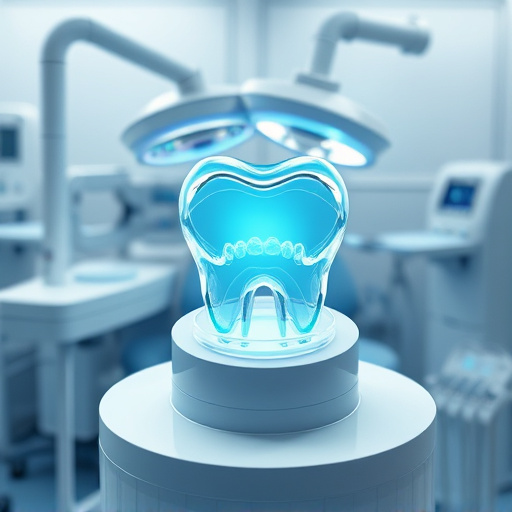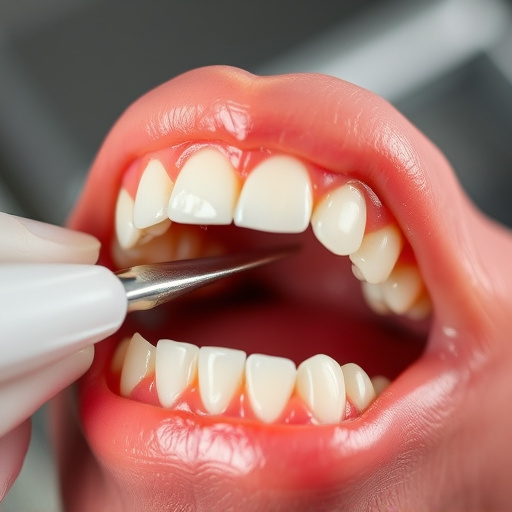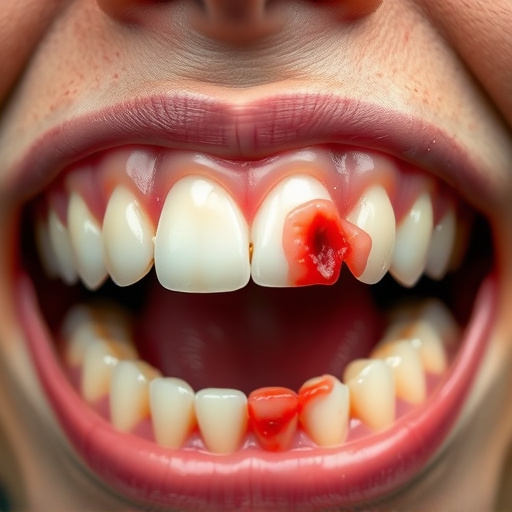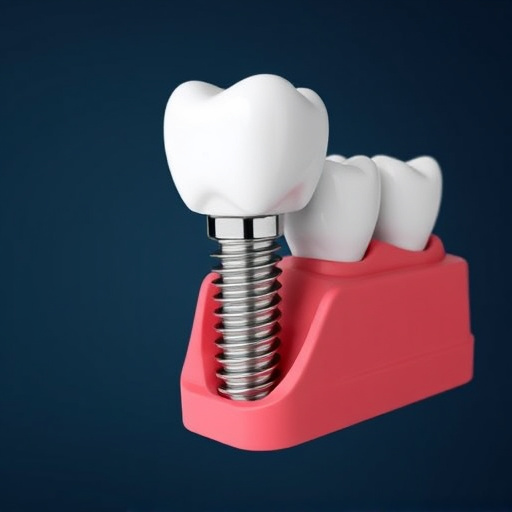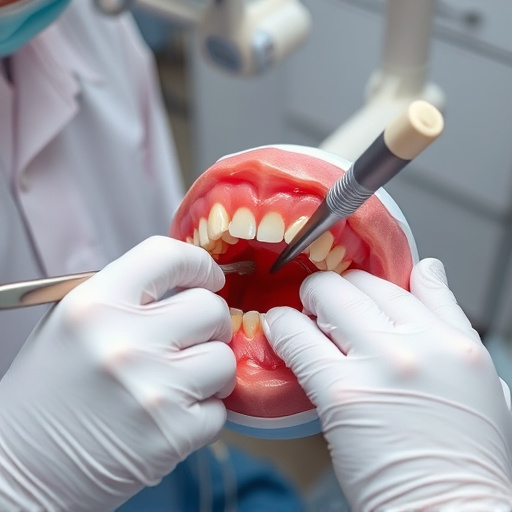Dental crowns and bridges provide long-term solutions for tooth repair, enhancing aesthetics and functionality. Crowns cap damaged teeth, while bridges replace missing teeth with artificial pontics secured by crowns. These procedures offer stability, prevent tooth shift, restore chewing and speech, and last up to a decade with proper care. The process involves consultation, preparation, impression taking, fitting, cementing, and aftercare. Costs vary based on complexity, material, and location, with crowns generally more expensive than bridges. Insurance coverage is often available. Regular oral hygiene practices are essential for maintaining their longevity.
Dental crowns and bridges are essential restorative dentistry solutions for missing or damaged teeth. This article provides a comprehensive guide to understanding these procedures, offering insights into their definitions, types, and benefits. We explore how dental bridges work as a permanent fix, enhancing both form and function. Additionally, we delve into the step-by-step process, costs, and aftercare requirements associated with crowns and bridges, empowering readers with knowledge for informed decisions.
- Understanding Dental Crowns: Definition and Types
- Bridge Restorations: How They Work and Benefits
- Procedure, Cost, and Aftercare: A Comprehensive Look
Understanding Dental Crowns: Definition and Types
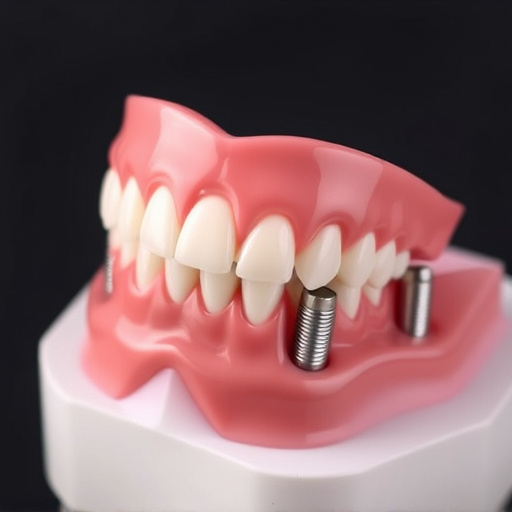
Dental crowns are custom-made caps that fit over a damaged or decayed tooth, effectively restoring its size, shape, and strength. They serve as a long-term solution for tooth repair, enhancing both functionality and aesthetics. There are various types of dental crowns, including metal, porcelain, and ceramic options, each offering unique advantages in terms of durability, color match, and biocompatibility.
When considering dental crowns and bridges, it’s essential to understand that a bridge is a fixed prosthetic device that replaces one or more missing teeth. It consists of an artificial tooth (or teeth) supported by dental implants or nearby natural teeth. This option provides stability and prevents the shifting of surrounding teeth, which can occur with traditional partial dentures. Both dental crowns and bridges are versatile solutions in cosmetic fillings and can significantly improve your smile’s overall appearance.
Bridge Restorations: How They Work and Benefits
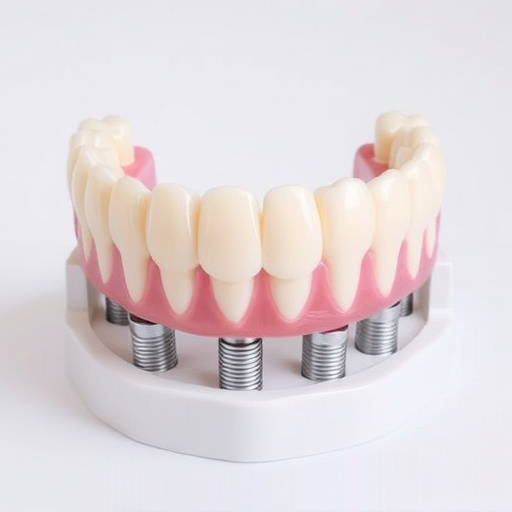
Bridge restorations are an effective solution for replacing missing teeth, offering both aesthetic and functional benefits. A dental bridge is a custom-made replacement that consists of one or more artificial teeth (called pontics) held in place by crowns on either side. These crowns are placed over your natural teeth or implants, providing a secure and stable foundation for the bridge. This procedure effectively fills gaps left by missing teeth, preventing the shift of adjacent teeth and maintaining the overall shape of your face.
One significant advantage of bridges is their ability to restore chewing function and improve speech clarity compared to dentures. They also provide long-term solutions, often lasting a decade or more with proper care. Additionally, dental crowns and bridges can be an alternative to wisdom tooth removal, especially if extractions are painful or difficult. This method preserves the natural structure of your teeth while offering a seamless restoration, ensuring you maintain a beautiful and healthy smile.
Procedure, Cost, and Aftercare: A Comprehensive Look
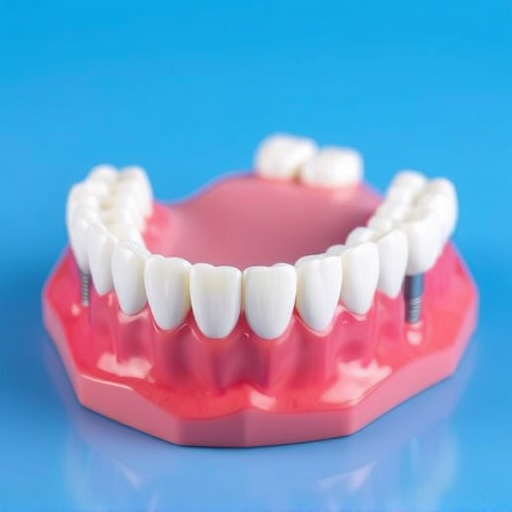
The procedure for dental crowns and bridges involves several steps. It begins with a thorough examination and consultation to determine the best treatment plan. The dentist will then prepare the affected tooth or teeth by removing any decay or damaged tissue, ensuring the structure is strong enough to support the crown or bridge. Impressions are taken of your teeth to create precise molds, which are used to craft the custom restoration. Once ready, the crown or bridge is fitted and cemented into place, restoring the tooth’s function and aesthetics.
The cost of dental crowns and bridges can vary widely depending on several factors, including the complexity of the case, the type of material used, and your location. Crowns are generally more expensive than bridges due to their custom nature and the materials employed. Restorative dentistry procedures like these are often covered by dental insurance plans, but it’s crucial to check your specific coverage and understand any associated costs. After the procedure, proper aftercare is essential. Maintaining good oral hygiene through regular brushing, flossing, and scheduled teeth cleaning visits will ensure the longevity of your new crown or bridge.
Dental crowns and bridges are effective solutions for restoring damaged or missing teeth. Crowns provide a long-lasting fix for individual tooth replacements, while bridges offer a seamless way to fill gaps in your smile. Understanding these treatments empowers you to make informed decisions about your oral health. By knowing the procedure, cost, and aftercare involved, you can confidently choose between crowns and bridges, ensuring a healthy and beautiful smile for years to come.


